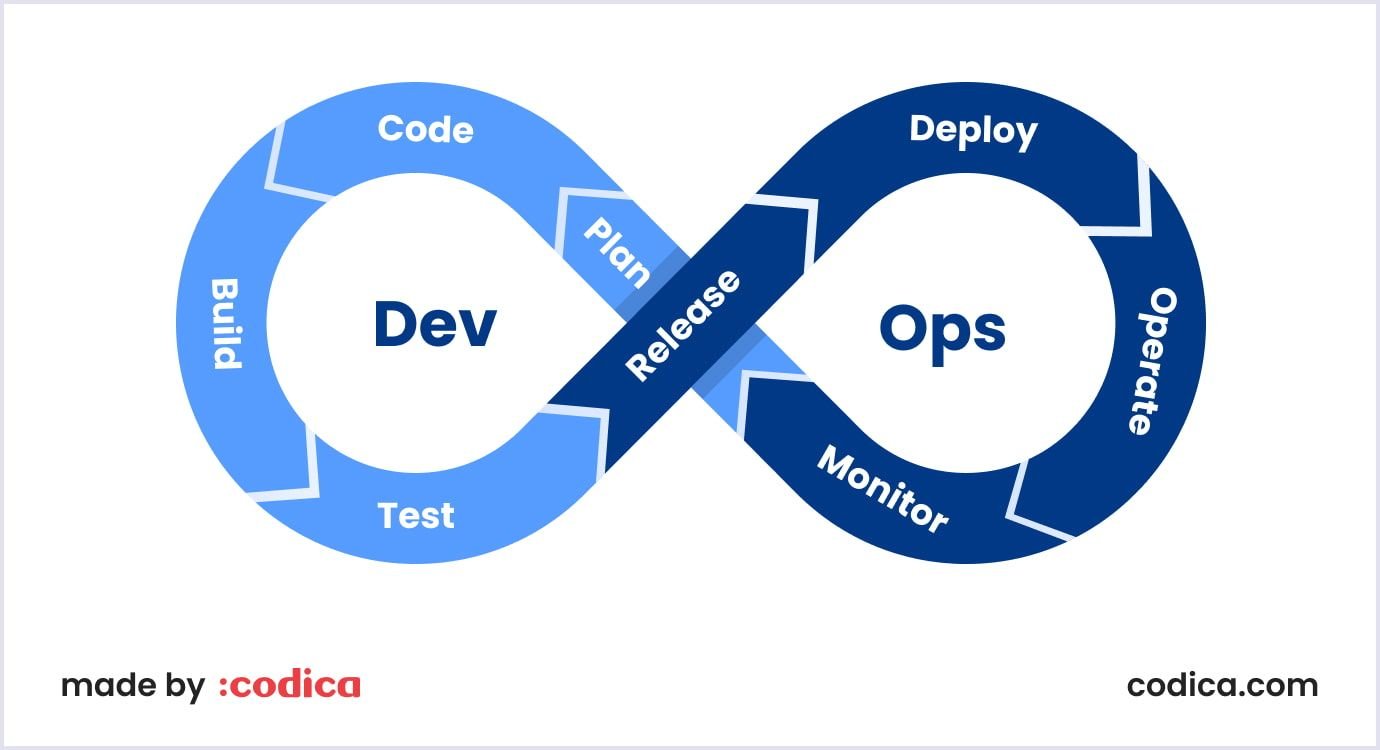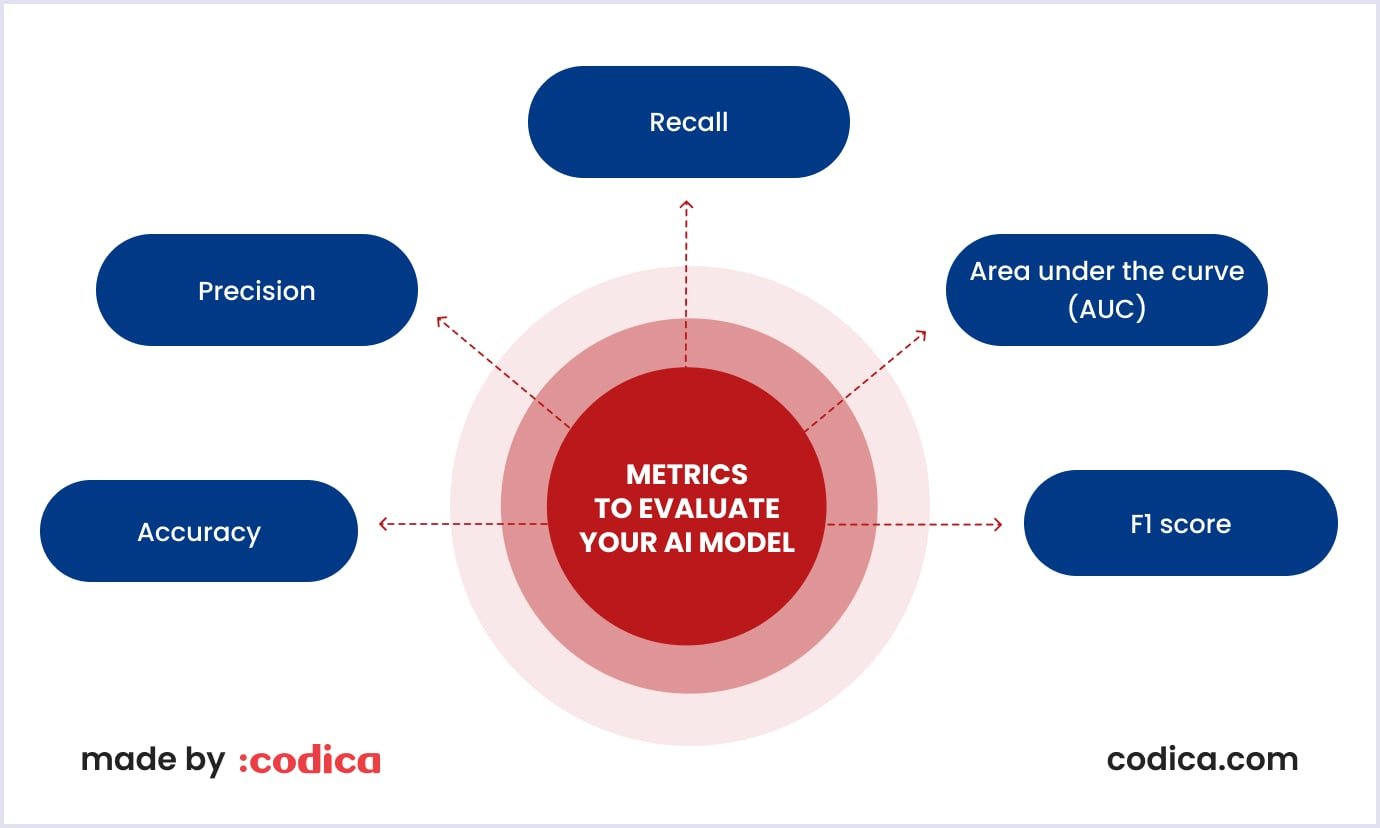Do you want to implement an AI solution for your business or customers? It is not that simple. AI is efficient, but you need to go through a challenging process that involves technical and management knowledge. To make your AI implementation process successful, you need a team of specialists and an understanding of legal aspects.
Our experts have prepared this brief guide to help you start. It outlines the crucial steps and aspects you need to consider for successful AI development and deployment. Knowing them will ensure that you move through the process with minimum resources spent and the best results achieved.
Define clear objectives
Setting goals is the first step of any planning. By this step, you lay the ground for the next successful endeavors. If you set your goal to increase the click-through rate by 20%, it outlines a better understanding and action to achieve that goal.
Align your AI project with your business goals. For instance, if your aim is to enhance customer support, it is reasonable to create an AI-powered chatbot.
At Codica, we set goals for an AI project at the project discovery stage. This planning stage is vital to outline your project’s idea, objectives, tech specifications, and team composition. Check out the video below to see what deliverables you will get after discovery sessions.
Start with a pilot project
Starting small is a proven approach to test your idea before a full-scale implementation. A pilot project helps you reduce risks and minimize costs. You also gain insights into how your solution will perform in the real world and which aspects you should address before full implementation.
The following are the steps to design and execute a pilot project:
- Begin with a specific area where AI is most helpful but poses minimal risk if issues appear;
- State specific goals for the pilot, such as optimizing a particular process or a metric;
- Gather a small team of specialists from the necessary areas;
- Ensure high quality of your data, and set a timeframe for data preparation;
- After deployment, monitor your AI’s performance;
- Collect feedback from users to see what you can improve.
Based on the insights from a pilot project, you can improve it and make the necessary adjustments. For example, does your recommendation system struggle with particular product categories? You can fix it at this small scale to prevent AI mistakes before launching a business-wide solution.
You may also like: How AI Enhances Your Existing Software Solutions
Ensure high-quality data
The basis of every AI-powered product is data. Its quality ensures the accuracy and effectiveness of the AI system. Your data should be well-analyzed, unbiased, and correct to provide beneficial outcomes. This is the foundation for responsible AI to give your customers efficient and secure results.
To ensure that your AI model data is compliant and versatile, follow such steps:
- Define how you collect, store, and use data with governance policies;
- Update AI data to remove inaccurate and irrelevant fragments;
- Engage domain experts to help you collect data and make it comprehensive and relevant to your specific case;
- Use automated tools to validate data and spot anomalies.
To maintain data quality over time, remove biases, inaccuracies, and incompleteness. For this, use various resources that reflect different groups and your particular situation. Regularly audit your data for incompleteness or inaccuracies to prevent AI errors. Also, other improvements should be incorporated based on feedback from experts and customers.

Choose the right AI tools and technologies
When you start your AI project, choosing the right AI tools and technologies is an essential step to success. This means that you evaluate what these technologies can do and their limitations. Remember that your business goal determines this choice of particular tools.
Other factors for choosing tools include your machine learning algorithms and their compatibility with your existing tech stack. Also, check that the chosen tools have reliable support from the community.
Particular examples of AI technologies include Keras for neural networks, scikit-learn for machine learning algorithms, and PyTorch for natural language processing and computer vision tasks.
Also, keep in mind the importance of scalability as your project grows to prevent artificial intelligence problems. For this, you will need a robust infrastructure that maintains high loads. This will save you from rebuilding your AI solution as it evolves. For example, Amazon SageMaker and Vertex AI offer many helpful tools and features for projects with potential rapid growth.
Below is an introductory video on Vertex AI that tech specialists and business owners will find helpful.
Assemble a skilled team
Having an expert team onboard is essential for your project’s success. Implementing AI is a challenge and requires technical expertise, including integration with existing systems. Teams should also understand your business strategy and the scope of AI’s operation. Moreover, qualified experts will predict and remove possible problems, preventing delays, failures, and AI mistakes.
Let’s now see what roles are essential for your AI implementation team:
- Data scientists develop algorithms, build models, and get insights from data;
- Machine learning engineers develop models, optimize, and deploy them;
- Data engineers create and manage data pipelines that feed AI models. They control that data is gathered according to the best standards to prevent AI mistakes;
- AI/ML product managers ensure that your AI solution fits your business strategy. They manage your solution implementation lifecycle from ideation to deployment and support;
- UI/UX designers focus on appealing and accessible user interfaces with well-thought-out flow;
- DevOps engineers create an environment for development and deployment and ensure that these processes are optimized and error-free.
How can you hire a reliable tech vendor? Look for candidates who work with specific tools and technologies applicable to your project. You can contact an agency specialized in AI development services and hire their team. To find a reliable agency, check reviews on Clutch, Owler, and Glassdoor. Agencies with relevant expertise and favorable reviews could be helpful for your AI product.
For example, Clutch has recognized Codica as a top developer.

Invest in infrastructure
Depending on your project scope, you will need compatible resources to develop and maintain your AI. Projects involving deep learning and machine learning are especially energy-consuming. So, you need powerful GPUs (graphics processing units) and TPUs (Tensor Processing Units) to create and train your AI models.
Basically, companies choose between on-premises and cloud-based solutions for AI implementation. Both of them have specific benefits.
Cloud-based solutions offer scalability, adaptivity, and low initial investment. You can handle complex and resourceful processes without the need for in-house expertise. So, you can experiment with your AI without heavy expenses.
On the other hand, companies that handle large volumes of data may need on-premises solutions. In this case, a company gains greater control and security and possibly lowers long-term costs.
Remember to choose your infrastructure carefully. Inadequate infrastructure slows down your development and production process. It also may result in downtime and AI errors, which worsens user experience.
If you need a solid infrastructure, our DevOps services are your helpful instrument. DevOps engineers in Codica have deep expertise and know how to ensure the smooth development and deployment of AI. Thus, you complete your project on budget.

Focus on data security and privacy
AI systems process large amounts of data that can be sensitive or relate to proprietary, financial, or legal information. Data protection helps you show that your customers can trust you. Moreover, secured data keeps you away from penalties and other legal and financial issues due to AI mistakes.
So, how can you ensure that your AI solution data are securely stored and processed? For this, adhere to the following methods:
- Use reliable encryption techniques;
- Regularly update software to prevent vulnerabilities;
- Provide access to sensitive information only to authorized staff;
- Perform regular audits and penetration testing to prevent potential risks.
Finally, stay updated on the latest standards and regulations on AI security. For example, the General Data Protection Regulation (GDPR) in Europe and the California Consumer Privacy Act (CCPA) in the United States provide strict guidelines on data security and protection. They help you understand how you can process and store personal and sensitive data preserving your customers’ rights. Following these standards and local regulations will protect you against penalties and save your reputation.
Monitor and evaluate performance regularly
AI monitoring is a crucial process that ensures the system's stability. Monitoring involves the observation of AI models in real time. Typically, engineers who track AI systems' performance observe the models' outputs, processing times, and overall behavior. Thus, the specialists can spot artificial intelligence problems and anomalies and remove them in time.
How can you evaluate your AI system’s performance? Key performance indicators (KPIs) will help you with that. Commonly used metrics include accuracy, precision, recall, and others for predictive models.

Additionally, you can identify true and false outputs for specific models. Other metrics include more business-related aspects, such as customer satisfaction, time saved, and cost reduction for business processes.
After evaluating your AI model, constant updates are necessary. Retrain your AI model with new data, adjust algorithms, and update parameters depending on your needs. Evaluate your AI when data changes and in case of shifts in user preferences or tech advancements. Routine checks and updates will help you maintain a compliant and effective AI system.
Prepare for changing the management processes
As in any team process, developing and implementing AI requires smooth flow to optimize time and costs. Whether you work on an AI project to propel your business or team up with a tech vendor, streamlined processes will make the development more efficient and prevent issues with AI.
Prepare workflows and responsibilities that will keep your AI project team on track and ensure agreed and quick changes when needed. As you defined everyone’s responsibilities and workflow, it will help you with ongoing communication. Your plan will ensure that updates are made quickly.
To help your team understand the new processes and AI problems and solutions, provide continuous training and support materials. These materials will help your team to keep up with changing decision-making and understand AI-powered solutions for business and work.

Learn from failures and iterate
When your AI system is up and running, gathering feedback is essential. It will give you valuable insights into AI’s work in real-world situations. Thus, you will understand where improvements are necessary. This way, you will ensure that your solution adapts to customer and business needs.
The vital thing in dealing with AI implementation challenges is to analyze failures and results. They will uncover data issues and other gaps. So, you can adjust the system as needed. Remember that your AI solution is an evolving system. Thus, maintaining its work over time is an ongoing process that will lead you to more efficient results.
Wrapping up
Implementing AI involves versatile knowledge and processes. It requires thorough planning, data preparation, model training, maintenance, and security monitoring. To ensure that these processes are optimized and overcome challenges with AI model launch, build and train your development team. Continuous learning on the AI system will help your team make necessary adjustments and updates and keep it relevant.
If you want to implement an AI system, our experts are eager to help you with planning, development, and support. Contact us, and we will discuss the details and give you a free quote on your project.
